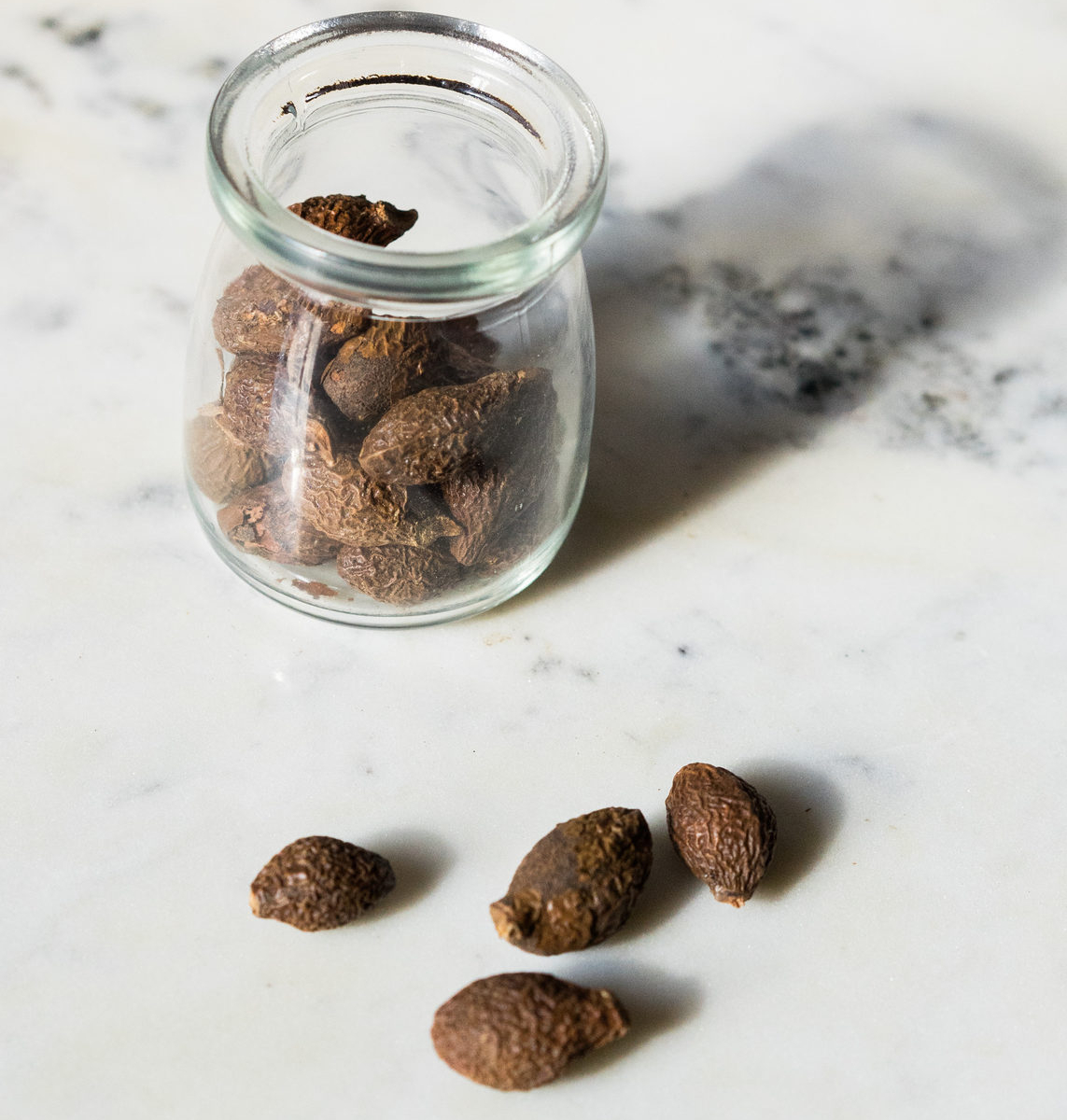
COMMON NAME (Chinese Name)
Malva Nut (Pang Da Hai)
BOTANICAL NAME
Scaphium Scaphigerum
BOTANICAL NAMES
Scaphium Scaphigerum; Sterculia Lychnophora; Scaphium Affine
USES
The historic uses of malva nut decoctions are wide-reaching, ranging from pain management to relieving constipation, laryngitis, and period pain. When applied topically, malva nut extracts have found use as a treatment for microbial infection and other skin diseases.
Today, malva nut is most commonly taken as an ingredient in dietary supplements or medicines for preventing colds and/or sore throats. Malva nut is also used in skin hydrating treatments after studies showed strong efficacy. Some research also suggests that the whole fruit of the malva nut tree may have anti-inflammatory and immune-boosting properties, meaning some take it regularly as a preventative boost. Malva nut gum (made from crushed and treated malva nut seeds), when taken alone as an oral supplement, may play some role in inhibiting the body’s ability to absorb glucose and fatty acids on a cellular level (supporting the role of malva nut powder in dietary/weight-loss supplements). Similarly, there is some (limited) research to suggest that malva nut juice may have significant anti-oxidative effects (meaning it protects cells against aging and stress) and, when taken orally, may help protect against toxicity from other foods. Malva nut gums and extracts are also being used as green water-additives to remove heavy metals from drinking water.
PREPARATION & ADMINISTRATION
Malva nut seeds, as well as powder and juice made from the ripened, dried seeds are often available for purchase through traditional herbalists, and are recommended for decoction before either oral or topical use. What’s more, supplements containing powdered or extracted malva nut byproducts are commonly available natural remedies for cold, cough, digestive distress, and several other common health conditions.
PRECAUTIONS
There are no reported interactions or hazards associated with malva nut supplements, though you should be especially careful when taking any dietary supplements.
You should consult with a certified herbalist, physician or other qualified healthcare professional before taking Malva nut.
REFERENCES
Chen, Shu, et al. “Prevalence of Dietary Supplement Use in Healthy Pre-School Chinese Children in Australia and China.” Nutrients, vol. 6, no. 2, 2014, pp. 815–828., doi:10.3390/nu6020815
Kanlayavattanakul, M., et al. “Preparation and Efficacy Assessment of Malva Nut Polysaccharide for Skin Hydrating Products.” Annales Pharmaceutiques Françaises, vol. 75, no. 6, 2017, pp. 436–445., doi:10.1016/j.pharma.2017.03.003.
Oppong, Mahmood Brobbey, et al. “Ethnopharmacology, Phytochemistry, and Pharmacology of Sterculia Lychnophora Hance (Pangdahai).” Chinese Journal of Natural Medicines, Elsevier, 12 Oct. 2018
Petchlert, Chatchawin & Boonsala, Panukorn & Payon, Vilawan & Kitcharoen, Kawalee & Promsopa, Supawadee. (2012). Antioxidative and antimutagenic effect of malva nut (Scaphium scaphigerum (G. Don) Guib. & Planch.) juice.
Siriarchavatana, Parkpoom & Suthamnatpong, Naowarat & Limpanasithikul, Wacharee & Phoonsiri, Chantara. (2007). Preliminary Study of Immunomodulatory Activity of Scaphium scaphigerum Fruits in Mice.. KKU Veterinary Journal.. 3. 12-22.
Srichamroen, Anchalee. (2017). Effect of extracted malva nut gum on reducing high glucose levels by Caco- 2 cells. Food Bioscience. 21. 10.1016/j.fbio.2017.12.007.
Thabet, Amany A., et al. “SterculiaandBrachychiton: a Comprehensive Overview on Their Ethnopharmacology, Biological Activities, Phytochemistry and the Role of Their Gummy Exudates in Drug Delivery.” Journal of Pharmacy and Pharmacology, vol. 70, no. 4, Sept. 2018, pp. 450–474., doi:10.1111/jphp.12876.
Zhao, Wen-Hua, et al. “The Novel Inhibitory Effect of Pangdahai on Fatty Acid Synthase.” IUBMB Life, vol. 60, no. 3, 2008, pp. 185–194., doi:10.1002/iub.28.
